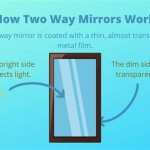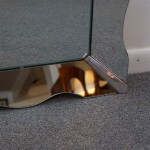How to Mirror iPhone to Windows Laptop
Mirroring an iPhone screen to a Windows laptop allows users to view and interact with their iPhone content on a larger display. This can be beneficial for presentations, watching videos, playing mobile games, or simply sharing content with a larger audience. Several methods facilitate this mirroring process, each with its own set of advantages and requirements.
One popular approach utilizes Apple's AirPlay technology in conjunction with third-party receiver software installed on the Windows laptop. AirPlay is a proprietary protocol designed for streaming media and mirroring screens within the Apple ecosystem. To mirror an iPhone to a Windows machine, users must install an AirPlay receiver application on their laptop. Several applications offer this functionality, some free and others paid. These applications effectively turn the Windows laptop into an AirPlay receiver, allowing the iPhone to connect and mirror its display.
When selecting an AirPlay receiver application, users should consider factors such as ease of use, features, and performance. Features like adjustable streaming quality and support for audio mirroring can significantly enhance the user experience. Some applications also offer additional functionalities, such as screen recording, which can be valuable for creating tutorials or capturing gameplay footage.
Once the chosen AirPlay receiver software is installed and running on the Windows laptop, the iPhone can connect to it. Users must ensure both devices are connected to the same Wi-Fi network for AirPlay to function correctly. The connection process typically involves opening the Control Center on the iPhone, tapping "Screen Mirroring," and selecting the name of the Windows laptop running the AirPlay receiver software.
After successful connection, the iPhone's display will be mirrored to the Windows laptop screen. Actions performed on the iPhone, such as scrolling, tapping, and opening applications, will be reflected in real-time on the laptop display. This provides a convenient way to share iPhone content with a larger audience or interact with apps on a bigger screen.
Another method to mirror an iPhone to a Windows laptop involves using a USB connection and specialized mirroring software. This method can offer advantages in terms of latency and stability, particularly in environments with less reliable Wi-Fi. The USB connection provides a direct and dedicated link between the two devices, reducing potential network interference and improving performance.
To utilize this method, users typically need to install specific mirroring software on their Windows laptop. These applications are designed to communicate with the iPhone via the USB connection and capture its display content. Often, these applications also require installing accompanying drivers or enabling specific settings on the iPhone, such as enabling Developer Mode.
Once the necessary software and drivers are installed, connecting the iPhone to the Windows laptop via USB will initiate the mirroring process. The software will recognize the connected iPhone and begin mirroring its display to the laptop screen. Similar to AirPlay mirroring, actions performed on the iPhone will be reflected on the laptop display.
A third option involves utilizing specific screen mirroring functionalities offered within certain Windows applications. Some applications, particularly those designed for communication and collaboration, have built-in features that allow users to share their iPhone screen during meetings or presentations. This eliminates the need for separate AirPlay receiver applications or USB connections.
These applications typically leverage screen sharing protocols and require the iPhone user to join a meeting or session within the application. Once connected, the user can then select an option to share their screen, specifically choosing the iPhone as the source. The application will then capture and display the iPhone's screen content to other participants within the same meeting or session.
The choice of mirroring method depends on several factors, including the specific requirements of the user, the availability of necessary software and hardware, and the desired level of performance. AirPlay mirroring is often the most convenient option for casual screen sharing and media consumption, while USB mirroring offers a more robust and reliable solution for situations demanding lower latency. Utilizing built-in screen sharing features within specific applications provides a streamlined approach for presentations and collaborations.
Regardless of the chosen method, mirroring an iPhone to a Windows laptop provides a valuable tool for enhancing productivity, entertainment, and collaboration. The ability to view and interact with iPhone content on a larger screen opens up a range of possibilities, from presenting work to enjoying mobile games with enhanced visuals.
It is important to note that specific instructions for each mirroring method may vary depending on the chosen software and hardware configurations. Consulting the documentation and support resources provided by the software developers can provide more detailed guidance and troubleshooting assistance.

How To Mirror Iphone Windows Pc Laptop Mac Full Guide

How To Mirror Iphone Windows 10

How To Mirror Your Iphone Screen On A Computer Pcmag

How To Mirror Iphone Windows Pc Laptop Mac Full Guide

How To Mirror Iphone Ipad Laptop

5 Minutes Screen Mirroring Iphone Ipad To Pc In 2024

Best Ways To Mirror Iphone Pc Via Usb Without Wifi

How To Screen Mirror Your Iphone A Windows Pc

How To Mirror Your Iphone Screen On A Computer Pcmag

How To Mirror Iphone Laptop Windows 10








